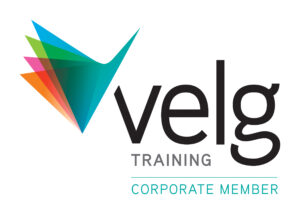About this Course
Course Description:
This course covers all the requirements for obtaining a national High Risk Work Licence (Class DG) for Dogging operations.
Successfully completing this course will allow you to direct the load movements for cranes, selecting and inspecting lifting equipment such as chains, synthetic slings, shackles and lifting beams within Australia.
This course does not cover the requirements for conducting rigging tasks. A High Risk Work Licence (Class RB, RI or RA) is required for this type of work.
Basic Course Requirements
All course participants must be:
- 18 years or older
- Able to read, understand, and write English
- Able to produce and meet the evidence of identity criteria as per SafeWork / Worksafe identification requirements
Protective Personal Equipment – safety boots, high-visibility vests, and hard hats– is mandatory.
If a participant requires a reassessment for a High-Risk Work Licence an additional $250.00 + GST reassessment fee will apply.
Location:
Public courses are available at our Salisbury, Ingleburn and Carrum Downs facilities.
Private training can be organised and conducted onsite if the following training and assessment requirements are met:
- A room with access to power, a blank wall for presentation, a projector screen or a large TV, table/s and chairs.
- Slewing Mobile Crane, with a telescopic boom and a winch with a minimum lifting capacity of 2t or more (with current service history, free from faults and operator manual present)
- Licenced crane operator (must hold HRW C2 licence or higher)
- Lifting equipment: Slings, tagline rope, fibre rope (minimum 10mm)
Required loads:
- Loose pipes in stillage (Minimum 2000kg)
- Steel plate (approx. 25mm, 1.5 x 0m)
- Square Load with defined lifting points such as a bin (minimum 2 tonne)
- Round load, such as a telegraph pole/log (minimum of 5m long)
- Uneven weighted load such as bin with material inside (minimum 2 tonne)
Course Outline
- Day 1: Introduction to Dogging Safety and Relevant Acts and Regulations
- Days 2 – 4: Practical Dogging Operation and Skills Building
- Day 5: High Risk Work Licence (Class DG) Assessment
- Available Sydney NSW, Melbourne VIC, Brisbane QLD
- Onsite training available
- Nationally recognised
- Online booking available
The CPCCLDG3001 course is structured so each session builds on the knowledge gained in previous sessions to build up key foundational and practical dogging skills. Each day we cover specific aspects of dogging and work towards progressively improving dogging skills.
Course Availability & Pricing
Please see our public course dates below. If there are no dates available or you would like to arrange a private course at your site or ours, then please select the ‘Private courses’ button.
Course Outcomes
Learning Outcome
On completion of the course, participants will have gained the following skills and knowledge to:
- Plan Operations: Hazard management and consultation
- Equipment: Selecting and inspection of appropriate lifting equipment for operations
- Prepare: Site and lifting equipment for operations
- Transfer Loads: Rigging loads and directing crane movements
- Conclude Operations: Shut down and pack up equipment following site specific procedures
Outcome
A nationally recognised Statement of Attainment AND A High-Risk Work Licence (class DG) will be issued through the WHS authority in your jurisdiction. (SafeWork/WorkSafe)
Further Information
What is Dogging?
A high risk work licence for dogging (class DG) is required by anyone who applies slinging techniques to a load, which includes:
- calculating safe angles for slings or chains
- selecting the type of sling or chain to be used
- selecting the correct method to secure the load
- selecting the safe method to lift or turn the load
- checking the conditions of lifting gear for wear and tear.
A DG licence is also required by anyone directing the operator of a crane or hoist in the movement of a load when the load is out of the view of the operator.
What is the difference between Dogging and Rigging?
Dogging (DG)
Dogging is the term given to a type of construction work performed by someone known as a “dogman”. They must be qualified in dogging (i.e., hold a valid Dogman ticket/licence).
Put simply: a dogger is responsible for anything below the crane hook. This entails safely slinging a load, which includes choosing and inspecting the lifting equipment, plus the method of slinging to move the load.
Dogging also consists of using training, knowledge and judgement to direct crane movement from outside of the machinist’s view, and of course, upholding and ensuring safety regulations and compliance.
Rigging (RB, RI, RA)
You can think of rigging as the next step up from dogging (in terms of the difficulty and risk in responsibilities on a site). In this way, all riggers are also dogmen (because they need to be qualified in dogging tasks too, as you will see below).
A rigger is responsible for anything below or above the crane hook.
Riggers use mechanical load-shifting equipment and gear to move, place and/or secure loads. They do this by using plant, equipment or members of a structure to ensure the stability, and to set-up and/or dismantle cranes or hoists.
Why Get Your Dogging and High Risk Work Licence (Class DG)?
This licence is mandatory to work as a ‘dogger’ in Australia. It is also a valuable addition to your ‘tool kit’ if you are looking to broaden your employment horizons within the construction, mining, and logistics industries. It’s also a prerequisite to becoming a rigger i.e. all riggers are also certified doggers (but not all doggers are riggers).
Why Choose Kallibr Training in QLD & NSW?
Kallibr Training is a registered training organisation (RTO) and leads the way in High Risk Work place training with advanced purpose-built training complexes in Sydney, Melbourne, and Brisbane.
Our High Risk Work Licence (Class DG) course will comprehensively prepare you for on-job dogging situations. It offers hands-on training using industry-standard dogging equipment in simulated real-life scenarios.
Unique Training Methods
Our training facilities are fully equipped with the same types of dogging and rigging equipment used in the real world, set up in realistic work-place training environments. This ensures our students graduate with all the necessary on-job skills and knowledge to competently and safely operate dogging equipment in any industry where doggers work.
Experienced Dogging Instructors
Kallibr Training’s WorkSafe / SafeWork accredited instructors bring many years of industry experience from a wide range of sectors – construction, mining, logistics etc. This allows them to provide students with real-life examples and scenarios.
Dogging Equipment
All dogging equipment used during training is the same, or similar to what students will use in the work place. We have Terex and Tadano cranes along with all the necessary hooks, slings, pulleys, ropes, cables, and common load types to train on.
Real-World Dogging Applications
Dogging is a key activity in many industries – construction, warehousing, manufacturing, mining and so on.
Kallibr Training’s real-world facilities and courses provide students with opportunities to train and practice in a variety of environments and situations that mimic the types of real-life dogging applications they’ll encounter working as doggers.
This equips them with the necessary practical skills and knowledge to safely conduct dogging activities in any industry or setting.
Certification and Ongoing Support
High Risk Work Licences must be renewed every 5 years within 12 months of the expiry date. Failure to renew during this time will require redoing all relevant courses to regain any endorsements you previous held, and wish to keep.
It is also important to stay abreast of industry standards and safety protocols, and keep skills honed.
We also offer refresher courses designed to help doggers keep their skills and knowledge up to date and reinforce safe operating techniques.
Flexible Training Options
As an industry training organisation, we understand the importance of fitting in with the industries and companies we service. So, in addition to our public courses, which are run during business hours, we can arrange flexible training options to accommodate your specific requirements.
Book your Dogging High Risk Work Licence (Class DG) Training Course
Contact us to discuss your dogging training requirements or to book your (CPCCLDG3001) dogging high risk licence (class DG) course with us today.
SafeWork/WorkSafe conditions of assessment:
- Applicants are to be at least 18 years of age.
- Able to produce and meet the evidence of identity criteria as per SafeWork / Worksafe identification requirements.
- Speak and understand English at a level to be able to participate in the training and assessment
Note: Verbal assessments can be arranged for applicants with writing and reading difficulties (extra charge applies)





